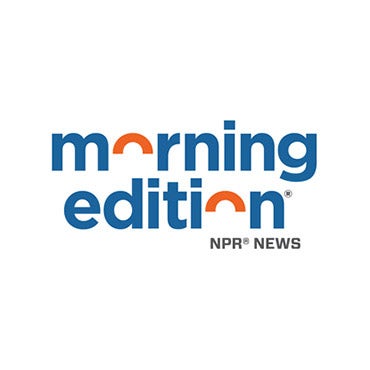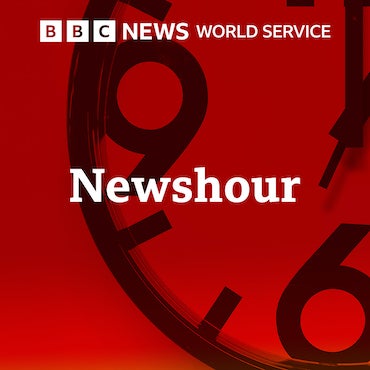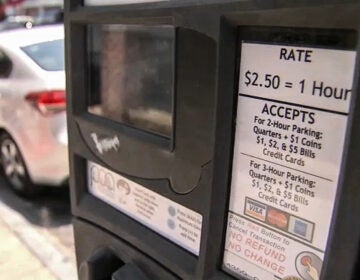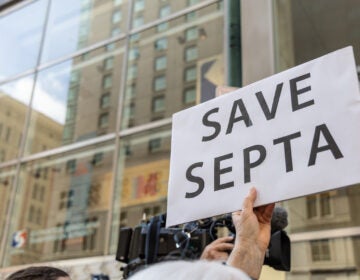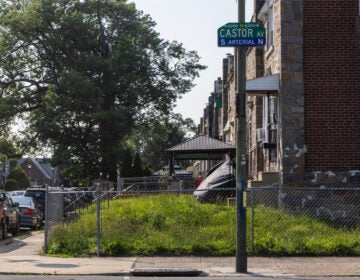Seeing red, UberBlack drivers seek to unionize

In many ways, Uber is the platonic ideal of the so-called “gig economy” business. It’s an app-based platform “disrupting” an established industry—taxicabs—with a business model that uses technology to circumvent the kind of costly processes that bog down their competition. Unlike taxi companies, Uber doesn’t buy their cars. Anyone with a clean driving record and a relatively new car can sign up to work for Uber with just a few clicks on their phone.
But a handful of Philadelphia Uber drivers who feel particularly aggrieved by a shift in the company’s business model are looking to take on the $60 billion behemoth by unionizing.
On Friday afternoon, around 30 UberBlack drivers—who operate fully-licensed limousines—gathered at the offices of the Newspaper Guild of Greater Philadelphia for a question-and-answer session and signed up to become “affiliate” members of the union.
“We came to an agreement that [the Philadelphia Limousine Association] would like to affiliate with our local, and see if we can help the group address their concerns obviously with Uber management who has seemed to just ignore their complaints,” said Newspaper Guild Executive Director William Ross.
Ali Razak, who heads the loosely organized Philadelphia Limousine Association, said he hopes other Uber drivers, including the UberX drivers who use their own cars, will join the push to organize. Philadelphia is at least the fourth U.S. city to see unionization efforts among Uber drivers. In Seattle, Uber has launched lawsuits and an advertising campaign against the union push there. In NYC, the company reached a deal where it partially funds the quasi-union there, the Independent Drivers Guild; in exchange, the Guild doesn’t attempt to collectively bargain on behalf of drivers. Razak and the other UberBlack drivers gathered on Friday said they opposed such an arrangement here. The Teamsters are trying to organize Uber and Lyft drivers in San Francisco.
Razak said the Association talked with other unions, but the Newspaper Guild, with backing from the AFL-CIO, seemed like the best fit.
Before the drivers could unionize, though, they need to be considered employees. That’s the subject of a fiercely contested class-action lawsuit working its way through federal District Court in Philadelphia. If the drivers were deemed employees, rather than independent contractors, they would be entitled to pay for time worked (instead of just fares collected), health benefits, and reimbursement for costs like gas and maintenance. The drivers say Uber’s rules and requirements for drivers—particularly UberBlack drivers—makes them more like employees; Uber contends that its drivers’ ability to set their own schedules and contemporaneously work for competing companies makes them more like independent contractors. A similar lawsuit in San Francisco reached a settlement last year, but the judge rejected that settlement, setting that case back some.
“In our lawsuit, it has become apparent that Uber is more interested in bleeding out the drivers than resolving the issue,” said Jeremy Abay, the lawyer representing Uber drivers in the class action suit. Abay said the Philadelphia case is at the forefront of this legal question, nationally, that strikes at the heart of the entire gig economy: Where is the line between independent contractor and employee? (The stark, all-or-nothing implications of these worker classifications have led some to call for U.S. labor laws to adopt an in between status like Canada’s dependent contractors, but so far there’s been little legislative movement.)
“As Uber increases the pressure on the drivers there needs to be some kind of immediate relief, and the drivers are hoping to get that relief through an affiliation with the news guild,” Abay said. The case could have far-reaching consequences beyond the ride-hailing world, with potential impacts on other app-based companies that link service providers (like delivery drivers) to potential customers.
The ultimate hope, Ross said, is that the drivers will be considered employees, and then can be signed up as full members of the Newspaper Guild, meaning a formal organization election through the National Labor Relations Board.
In the interim, the drivers who sign up as affiliates won’t pay any dues but the Guild will try to get Uber management to discuss better conditions. Drivers who sign up will also get access to a healthcare provider locator service offered to full union members as a benefit.
PlanPhilly spoke with a handful of drivers at Friday’s meeting. All drove for UberBlack, buying their luxury vehicles after Uber began services in Philadelphia in 2012, but before the company introduced the cheaper UberX option in the fall of 2014.
Neal Braswell drove a taxi before switching to UberBlack. “Uber came into town and took over, so I followed the money,” said Braswell. “I enjoy driving, so I came aboard.” Braswell leased a new car to drive for UberBlack and the money was good at first. But then Uber introduced UberX and it all went downhill. Prices vary, but an UberBlack trip can cost two-to-three times more than an UberX trip. The lower price point drives most ridership demand to UberX now. To Braswell, it felt like a bait-and-switch: “Uber created this monster.”
Amaar Farooqui told a similar story. He’s been driving UberBlack for four years; he drove a cab before that too. “They helped us out a lot in the beginning, the first few months, then we all bought our own cars,” said Farooqui. “Within a few months, they launched UberX here illegally and that’s when the downfall started.”
“We were making good money, so we agreed to buy an expensive car and then pay a high interest of 22 percent on it,” said Farooqui. “Since we were making money, we were fine with it at that time. But now it’s totally different.” Farooqui had two cars, a Lincoln MKX and a Chevrolet Suburban. He said recently gave up the Suburban, because he couldn’t make the payments.
Braswell said he regularly spends 100 hours working in a week. Farooqui called 70 hours normal for him. Both admitted that they often switch from UberBlack to UberX, where the rides are cheaper but there’s significantly more demand. Until Friday, Uber drivers kept 80 percent of each fare; Uber reduced the rate to 75 percent. Drivers weren’t given an option to negotiate: In order to drive for Uber, they had to hit ‘Accept’ on the app. That kind of “take it or leave it” option is more indicative of an employer-employee relationship than an independent contractor.
While the room on Friday was dominated with UberBlack drivers, those in attendance only made up a small fraction of the around 600 UberBlack drivers in the Philadelphia region. And that number pales in comparison to the number of UberX drivers: More than 20,000, according to the company.
Organizing the thousands of part-time UberX drivers will be much harder than the few hundred UberBlack drivers who invested heavily, and perhaps foolishly, in luxury vehicles on the assumption that Uber would mean steady and profitable business.
Through a spokesman, Uber declined to say whether they would oppose this unionization effort as they have fought other efforts elsewhere. But in a statement, Uber argued that their drivers enjoy the independence and control of setting their own schedules. “If drivers became employees they’d lose that independence and control,” read the spokesman.
That’s certainly true for at least some, if not most, UberX drivers. “If I had a say in it I’d say no,” said David, an UberX driver who declined to give his last name for fear of upsetting the company. “We came into the game as scabs to begin with, y’know as far as crossing over and taking business away from the cabs.”
“I think it’s kind of hypocritical to take jobs away from cab drivers or reduce their work and then try to build something on of that.”
David, who is pursuing a career in stand up comedy, said he likes the flexibility driving for UberX provides as a way of padding out his sometimes-spotty income. “It’s definitely got its ups and downs, but I love the fact that you can come in you can make money if you need to, quick, cash out immediately, it’s pretty much like an ATM for me, y’know?”
Another driver who also declined to give his last name, Vitaliy, echoed David. The union isn’t for him.
“To be honest I don’t have any reason to unionize,” said Vitaliy. “Uber has been working out fine for me.” In addition to driving for Uber 20 to 30 hours a week, Vitaliy works at Starbucks and takes college classes online. Vitaliy says he makes between $10 and $20 an hour, depending on surge pricing (and before taking gas and other costs into consideration).
But he said he understood why some drivers who rely on driving fulltime might want to unionize: It’s not the most reliable work and totally dependent on his car not breaking down. “I’d be really stressed out if this was all I was doing and this was my only way of making money, because you never know what can happen.”
Still, at least for him, unionizing just doesn’t make sense. “If Uber does something crazy and I don’t really feel like it’s worth it for me anymore, then I’ll just not do it. I don’t really need to have that kind of safety net.”
Even if the union organizers could convince the Vitaliys and Davids of Philadelphia that they’d be better off, other hurdles remain. First, drivers need to win the class action lawsuit. Even if they do win, Uber could agree to treat them like actual independent contractors, meaning they would relax requirements and give drivers more flexibility.
Even if those don’t happen, there’s another, more existential problem looming on the horizon: Uber’s ultimate plans to replace drivers with automated vehicles.
Faced with that concern, the drivers respond with denial: Most think driverless cars are much farther off than Uber and its competitors claim. In the meantime—which drivers want to last many years still—they hope the lawsuits and unions may bring back the good old days of just three years ago.
WHYY is your source for fact-based, in-depth journalism and information. As a nonprofit organization, we rely on financial support from readers like you. Please give today.
